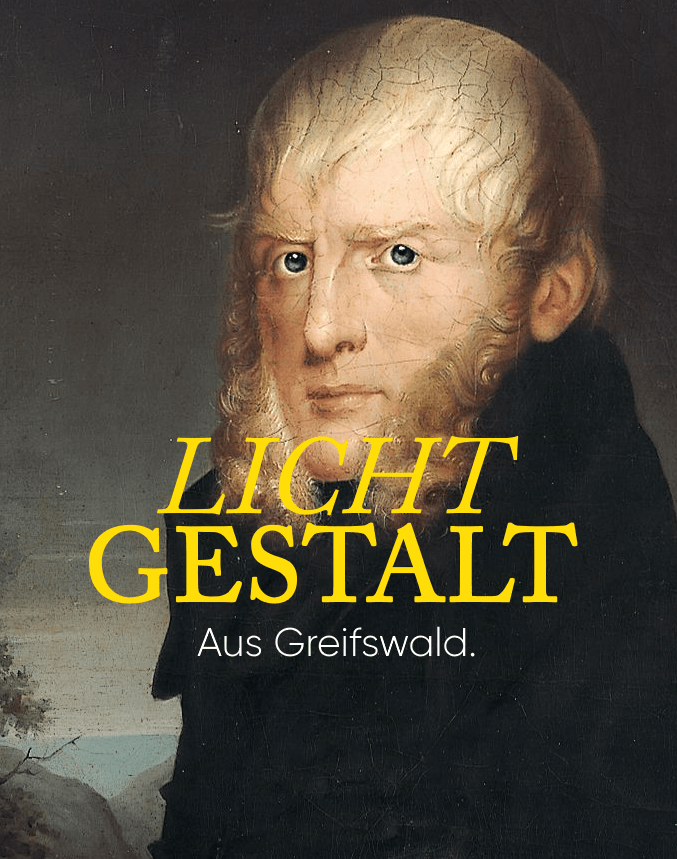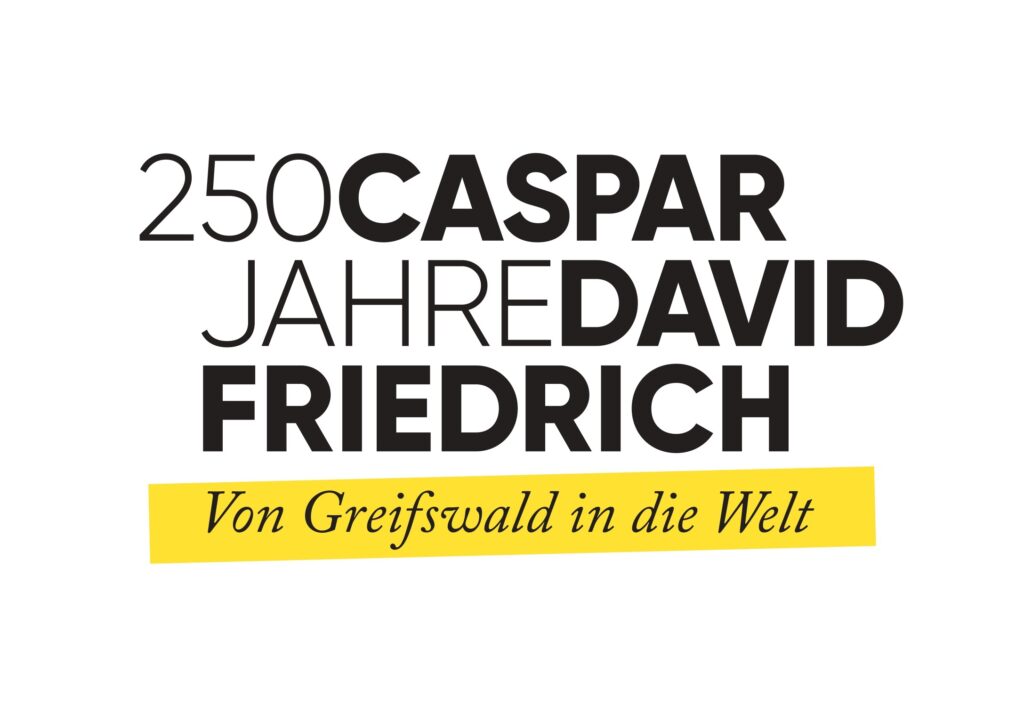A life in detail
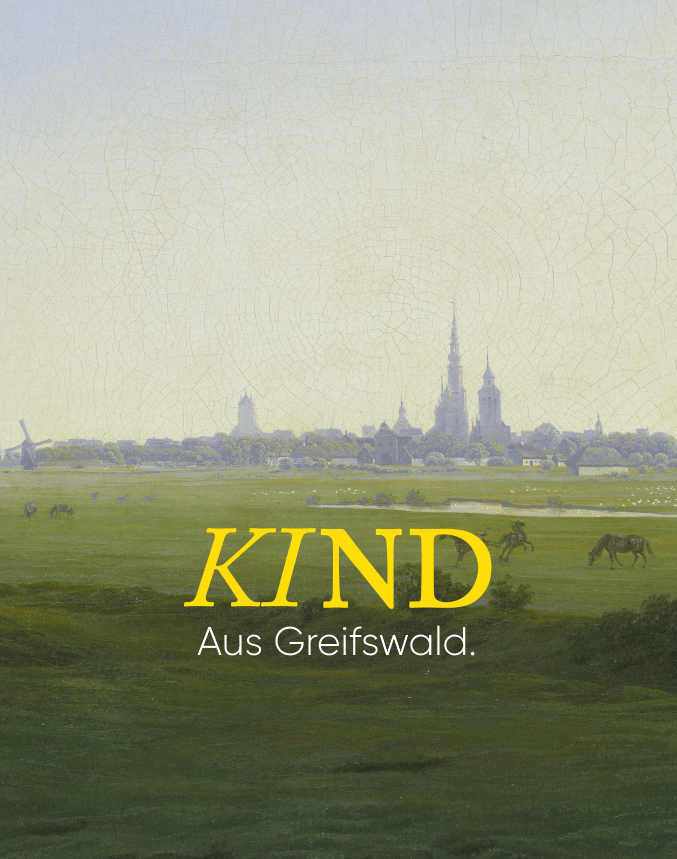
Caspar David Friedrich was born on 5 September 1774 in Greifswald, on the street now known as Langen Strasse 57 (front house of the Caspar David Friedrich Centre). The sixth of ten children, Friedrich grows up in the shadow of the Greifswald St. Nicholas’ cathedral. The church register displays both the marriage of his parents (1765) and the baptisms of the children – Caspar David on 7 September 1774.
Three of his siblings stay in Greifswald. His brothers Adolf and Heinrich become soap and candlemakers and continue their father’s craft. His brother Christian becomes a carpenter and his brother Samuel a smith in Neubrandenburg. Friedrich’s sister Catharina Dorothea marries a pastor from Breesen bei Neubrandenburg, where the roots of the Friedrich family also began. Parents Gottlieb Adolf Friedrich and Sophie Dorothea, née Bechly, first moved to Greifswald in 1763.
Caspar David Friedrich was a family man, remaining closely connected to his home and his siblings throughout his life. He also maintained lifelong friendly contact with other acquaintances. Friedrich returned to both Greifswald and Neubrandenburg again and again to visit his family, such as in 1818 when he introduced his wife Caroline to his siblings and visited the island of Rügen with her.
Friedrich was not a globetrotter. After his studies at the Royal Danish Academy of Arts he moved to Dresden in 1798. From there he visited the immediate and nearby surroundings of the Giant Mountains, the Harz, and North Bohemia, and above all his native city of Greifswald, and the island of Rügen. In what is now Pomerania, he whiled away several
months and went on long hikes in the Greifswald countryside.
He might have travelled to his hiking destinations by carriage and ship, but when he arrived, he often chose the slowest form of transport in order to fully dedicate himself to enjoying
nature. “We want to completely lose ourselves in the wonderful effects of nature!” he wrote in a letter dated 1.05.1815 1 . To him, hiking was a special type of natural experience which he completely surrendered himself to. His hikes were also “drawing trips”. He drew complete landscapes, as well as trees, stones, branches and flowers in great detail in his sketchbooks. Later, he used the collection of nature motifs to create details that he then added into his impressive landscape paintings in his atelier in Dresden. The fact that he found his motifs and inspiration in nature is testament to Friedrich’s deep connection to it.
1 Caspar David Friedrich: Die Briefe [The Letters], edited and annotated by Herrmann Zschoche, ConferencePoint Verlag: Hamburg, 2005
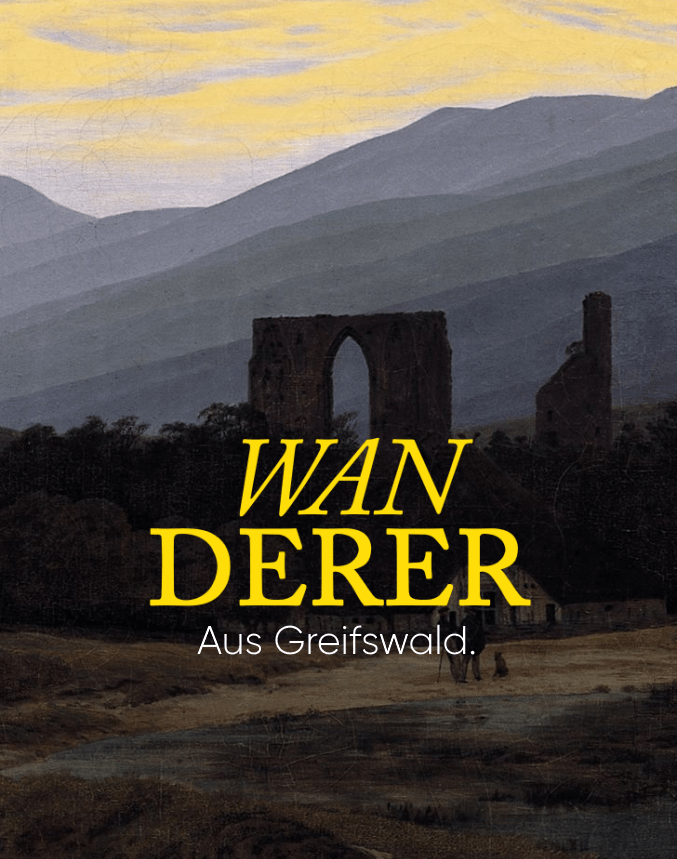
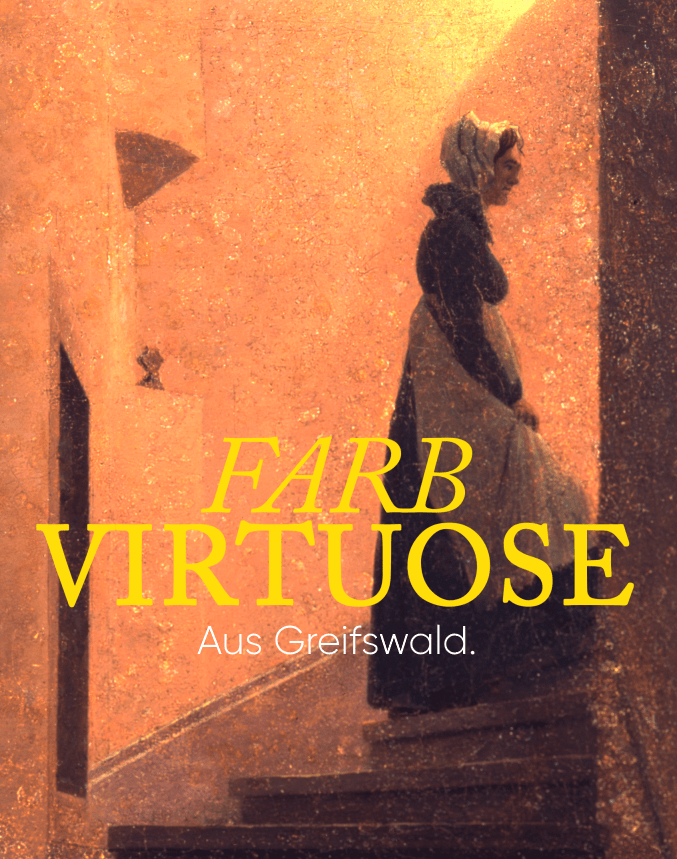
Today, Caspar David Friedrich might be most well-known for his oil paintings but he first learnt to draw in Greifswald and Copenhagen. His unique approach to colour is already recognisable in early watercolour and calligraphy exercises (three of these sheets are owned by the Pomeranian State Museum), which he completed at the age of 15 in Greifswald. Over the course of time he developed a broad colour spectrum based on his intensive and very precise observations of nature.
His sunsets are famous, although they show but an excerpt of his colour effects. It’s worth taking a closer look. For example, in the painting Neubrandenburg at the Pomeranian State Museum Friedrich conjures a golden autumn sky on the canvas. Yellow and violet tones dominate the skies in the later phase of his work. In Summer and Meadows near Greifswald a fresh green is the predominant background colour. Friedrich’s colour mastery can also be seen in the sky and cloud depictions which often form significant parts of his landscape paintings.
Caspar David Friedrich is now known and revered around the world as one of the most famous Germain painters alongside Albrecht Dürer. Friedrich is considered the founder of the Modern painting movement and was already being imitated by other artists shortly after his death. Caspar David Friedrich thus became a luminous figure that continued to shine well
beyond his lifetime and his home city of Greifswald.
Friedrich’s productive period occurred in the cultural-historical era of Romanticism. This period is dated differently depending on the artistic medium. In literature it began at the end of the 18th century with Jena Romanticism and continued in painting from the beginning of the 19 th century up until approximately 1840. While the Romantic era is first and foremost a European phenomenon, it did have some impact in North America. Friedrich is considered worldwide to be one of the most well-known representatives of this era.
Friedrich influenced other painters while he was still alive, including Johan Christian Dahl, Carl Gustav Carus and his students August Heinrich and Georg Heinrich Crola. His influence, for example, on the Copenhagen and Düsseldorf painting schools should not be underestimated. Today, Caspar David Friedrich’s work remains a huge source of inspiration for dozens of artists and a gateway to artistic debate and intervention. Artists such as Ólafur Elíasson, Hiroshi Sugimoto and Gerhard Richter refer heavily to the work of the Greifswald painter.
